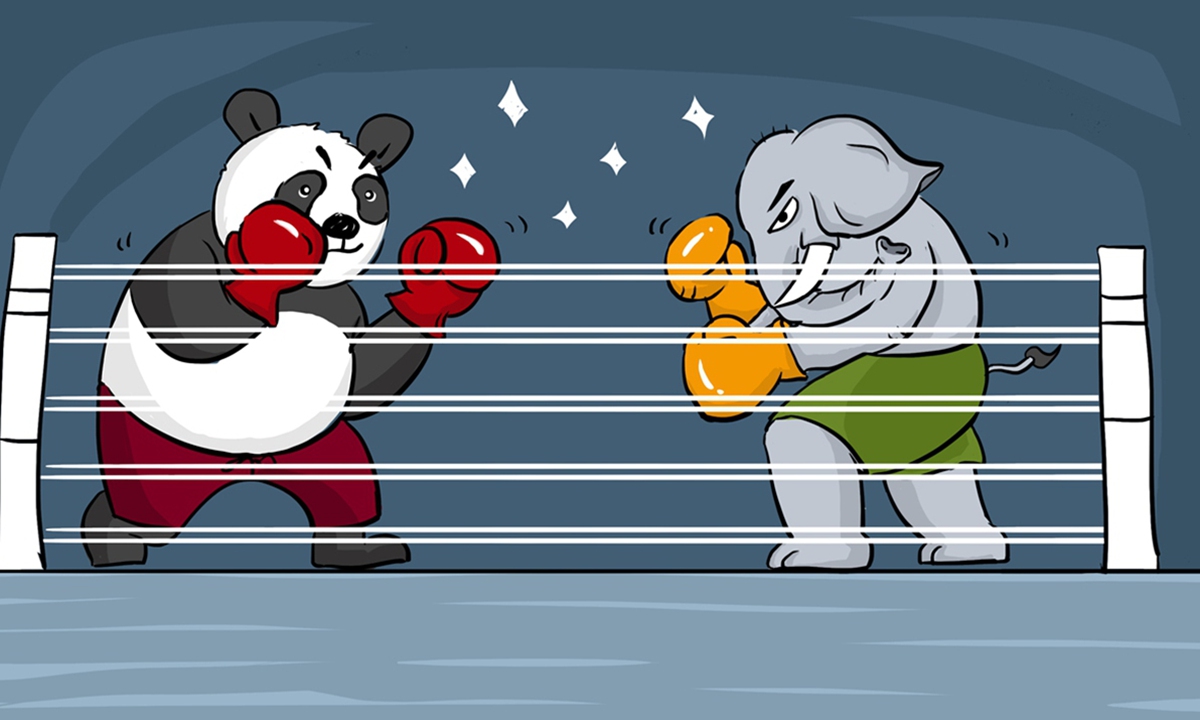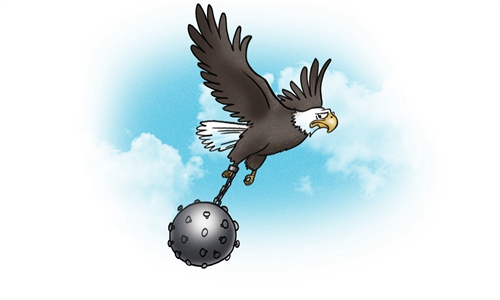Lowy Institute report reflects India's overconfidence in confronting China

China India Photo: GT
The Sydney-based Lowy Institute released its 2020 Asia Power Index on Monday. Rankings of countries published by different institutes tend to draw diverse results based on models and indicators adopted by institutes and the indexes can reflect only part of the facts. Despite so, useful points can be gathered by analyzing the rankings between countries and the changes of national power indicators over the years.
The Lowy Institute ranks India as the 4th among 26 countries for comprehensive power, with an overall score of 39.7 out of 100, 1.3 points lower than the 2019 figure. This mirrors the fact that like many other countries indexed, India's economy has been gravely hit by the coronavirus epidemic. Furthermore, the result also means its national power will be significantly shaped by whether effective measures have been taken and sufficient efforts have been made to deal with the epidemic.
When it comes to indicators, India lost more points in terms of cultural influence, such as the ability to shape international public opinion through cultural appeal and interaction, measured in terms of cultural projection, information flows and people exchanges. In the same category, India lost more points at the sub-indicators of people exchanges. For instance, India's rankings on "regional travel destination" and "regional travel connectivity" are only 12th and 7th respectively. The data was prior to the pandemic, and the lower rankings reflect a long time lagging behind in the construction and institutional reforms to boost its tourism infrastructure.
The report also shows a drop in India's diplomatic influence. It is an indicator for international capacity but linked to its internal development. Passing the Citizenship (Amendment) Act in December 2019 and abolishing Article 370 in August 2019 have greatly disappointed the international community. The second term of Indian Prime Minister Narendra Modi failed international expectation in economic reforms, as little was accomplished in this regard. Increasing trends on extreme cultural conservatism, political majoritarianism, as well as economic protectionism have undermined its diplomatic influence.
The report also reveals that India had the biggest gains in defense networks. It is consistent with the policy stands of the ruling Bharatiya Janata Party in dealing with differences with its neighboring countries. India's tensions with China and Pakistan have been escalating, and it has been engaging in spats with Bangladesh and Nepal. Anticipating backlashes from its neighbors, India has enhanced international ties for arms buildup.
India's rising marks in defense networks is also linked to India's national strategy to highlight its international status and underline regional competition. Since Modi took office in 2014, his administration has been devoted to boosting India's international status, taking China as its imaginary rival. The escalating tensions between China and India have pushed India to strengthen its cooperation with other members of the quadrilateral security group.
The report classifies India as a middle power, short of the major power threshold of 40 points in 2020, while China is labeled as a "superpower" with the US. The report predicts India will only reach 40 percent of China's economic output by 2030 - down from the 50 percent forecast in the 2019 Asia Power Index. The report also said India's rise as a superpower "will be a multi-decade effort" if it ever happens.
This is a frank prediction and differs from popular discourses by some Western media outlets, which keep preaching India as a rising power to be equated with China, indicating clearer awareness by the Lowy Institute on India's position, and the substantial power gap between China and India.
Asia Power Index might serve to cooling down Indians' overheating nationalist sentiment. Since the border tensions erupted in May, strategists in India insisted that the Indian army is capable of coping with the "threat from China." The Modi administration also caters to the sentiment and was leaning on Western resources and influences to contain China, but only getting some expensive arms sales and insignificant lip-service support.
India's aggression on border confrontations with China had led itself into a dilemma. The capacity gap between the two countries leaves India with little chance to win, since any realistic sand table exercise would present Indian army merely as a stepping stone for Chinese army to verify its fighting capacity and combat effectiveness after years of development and modernization.
The author is an assistant professor at the Institute for International and Area Studies, Tsinghua University. opinion@globaltimes.com.cn

